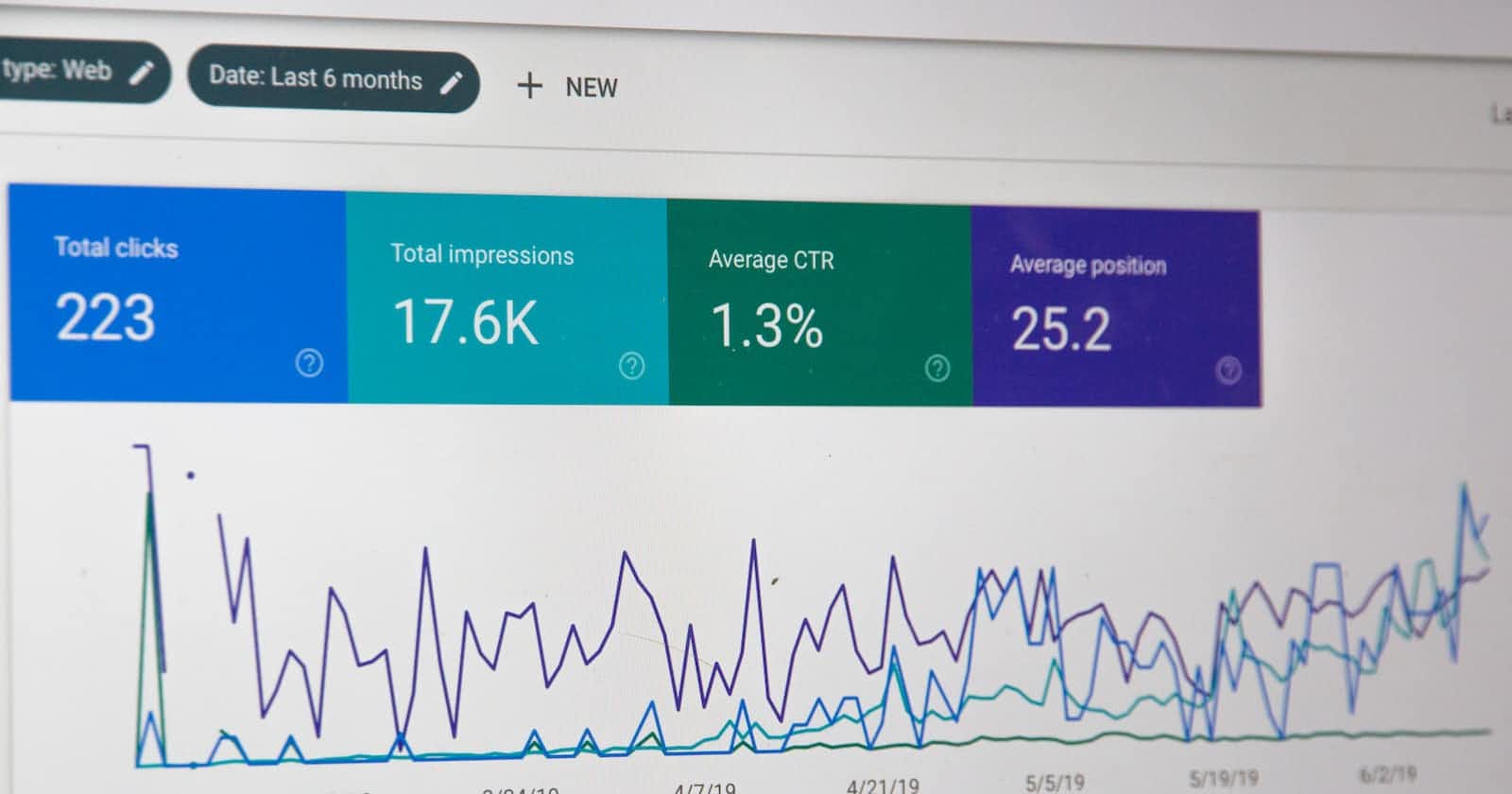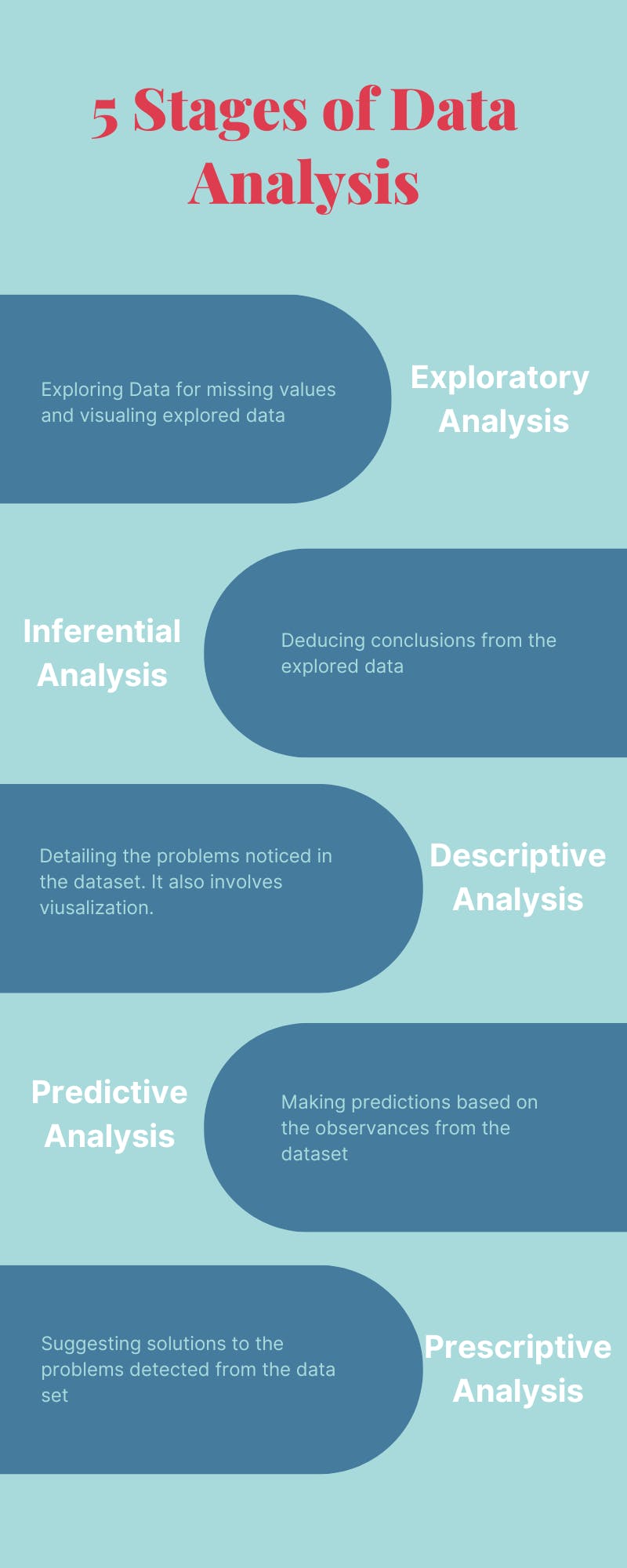Data Analysis for Building Solutions

Trypanophobia?
Yes, that's the word!!!
It is the fear of injection needles for medical treatment.
To some, tablets are better, while others prefer liquid or even drips. Irrespective of your choice of treatment method, the most important thing is adhering to the doctor's advice.
You already know why right?
You just want to get fit and go back to your daily business.
Oh! Talking about business
It is not news that every business seeks consistent and constant growth. Businesses also look for ways to outdo their competitors. All these can be achieved using data analysis just like the doctor analyzes your biological data for diagnosis.
Now that I have your attention🤗😃
This piece of writing has nothing to do with medical sciences, the author isn't medically inclined. Hence, this article is aimed at detailing the procedures involved in Data Analysis from scratch to finish.
In this article, you'd find:
An Overview of Data Analysis
Stages of Data Analysis
Introduction to Data analysis using a programming language
After reading this article, you'll be ready to take up your first dataset and analyze your way to a feasible solution.
To understand this article better, the author assumes that you:
Have an interest in generating business solutions using data
Have prior knowledge of at least one Data Analysis tool
Overview of Data Analysis
Data Analysis is the bedrock of so many operations done in the Data field. For instance, to prepare a dataset for any type of Machine Learning Algorithm, the data must be properly analyzed. Also, by giving a detailed report about the current inflation in the market price of foodstuff, proper analysis must be done on the available dataset.
Data Analysis is not restricted to programmers alone but also adopted in finance, economics, the healthcare sector and more. It plays a significant role in decision-making and future projections.

Stages of Data Analysis
Depending on the purpose, data is analyzed for various reasons or purposes. As a Data Analyst, you'd be doing one or more of these analyses as you progress in your career. There are about five stages of Data Analysis, they include:
Exploratory Analysis
Also known as Exploratory Data Analysis (EDA), it is one of the most common methods of data analysis. From the word Explore, EDA uses various statistical methods to check for the relationship between the variables in the dataset. It also investigates the anomalies in a particular dataset and displays the outcome using one or more graphical methods such as a bar chart, cat-ploy, matrix, etc. EDAs can be used to suggest a solution, project a hypothesis or make a recommendation.
Inferential Analysis
Inferential Analysis is a type of analysis that concludes a piece of the entire data. In other words, a fraction of the entire dataset is being analyzed to arrive at a general conclusion. An example of inferential Analysis can be seen in Chi-square where conclusions are made by sampling a certain portion of data.
Descriptive Analysis
This type of analysis is based on using different metrics to describe the data points in a dataset. Take for instance a dataset of registered voters, the metrics for description can be:
Which region has the highest number of voters?
What state registered the least number of under-aged voters?
How many voters' cards are invalid? ...and many more
Descriptive Analysis aims to detect outliers in the dataset while giving a summary of the entire dataset
Predictive Analysis
Predictive analysis is all about prediction, that is, using past or current occurrences to predict the future. It is an advanced data analysis method often used by companies to know their future risks and opportunities. Using the voter's dataset again, the answers to the questions suggested in the descriptive analysis can be used to conclude such as:
invalid voters cards will disenfranchise people from performing their fundamental rights
under-aged registered voters can open room to election rigging ...and many more deductions
Prescriptive Analysis
The essence of analyzing data is not only for insights but also to deduce some outcomes from the insights obtained. It is synonymous with a doctor performing a diagnosis. After the diagnosis, what next? Prescriptive Analysis involves suggesting analytic solutions from the entire phases of analysis. At the prescriptive analysis stage, the Data Analyst is expected to come up with a feasible solution to be implemented.
With your predictions from the voter's dataset, what can you suggest as a feasible solution for effective voter inclusion and participation?
Introduction to Data Analysis using a Programming language
Generally, data is stored most time in excel sheets. For more robustness, some companies use SQL for relational databases. As a Data Analyst, you would be working with any of these and maybe more.
Although not often required (unless for data scientists), you may want to explore and analyze your data using programming languages such as R, Python or Java.
Fear not, if you're just hearing these for the first time, the most important thing as stated earlier is: driving business solutions using data.
Python uses various libraries like Numpy, Pandas and matplotlib to import, explore, analyze and visualize data. You can learn more about python for data analysis here
import pandas as pd
import numpy as np
import matplotlib.pyplot as plt
Some trusted python tools to help you complete your EDA in the shortest time possible:
DataPrep
AutoViz
Pandas Profiling
Sweet Viz
Conclusion
Decisions are made based on efficient analysis, which is a product of a properly cleaned, analyzed and visualized dataset. The purpose of Data Analysis is not only for cleaning and wrangling, there's meant to be an outcome after the analytical operations are performed.
Data Analysis requires you to get acquainted with either SQL or Excel (or both) in addition to a visualization tool such as Tableau or Power BI. Mastering their usage is the first step in becoming a Data Analyst Pro.
In addition, pick up learning at least one programming language such as the ones listed in this article. The goal is to become world-class and not limit yourself to current demands alone.
In subsequent articles, we'll delve into using the above-listed python tools for data exploration and analysis. Until then, get a dataset and practice!
 Maybell's Blog
Maybell's Blog